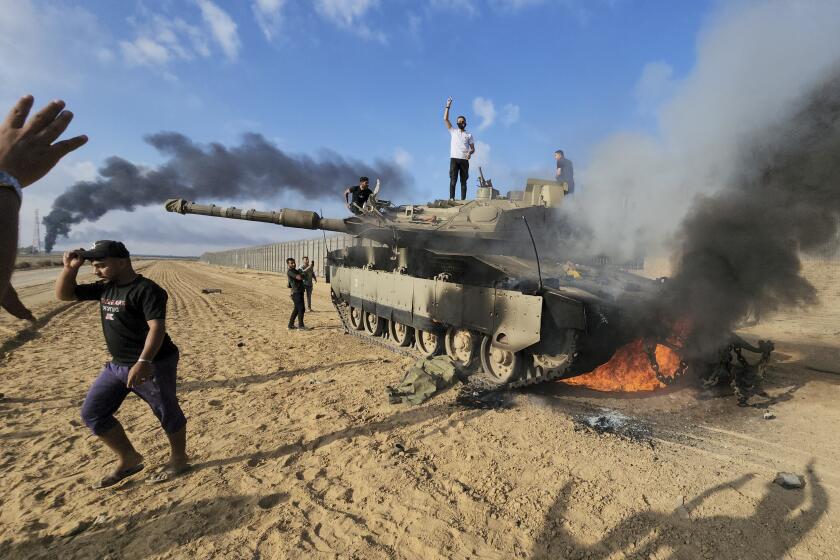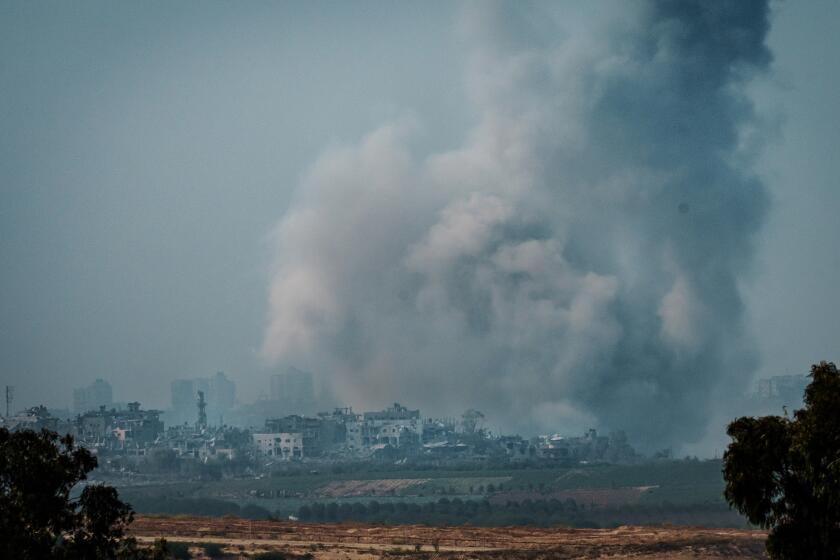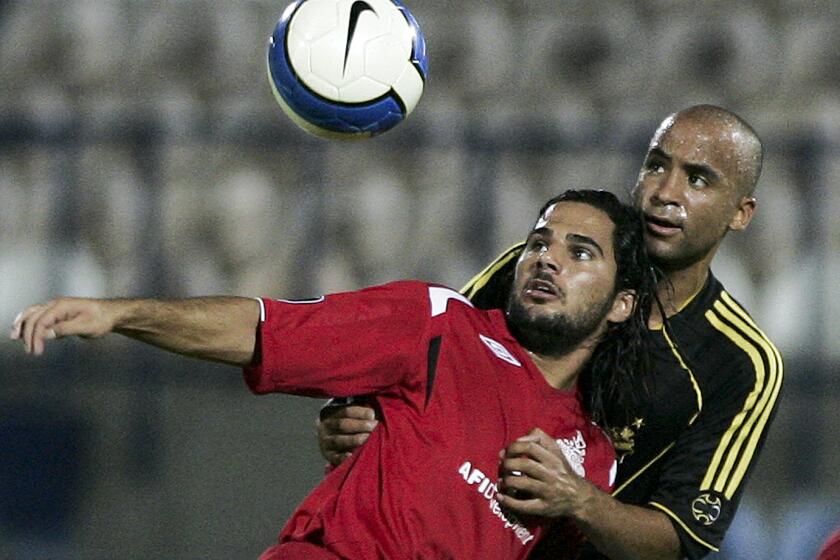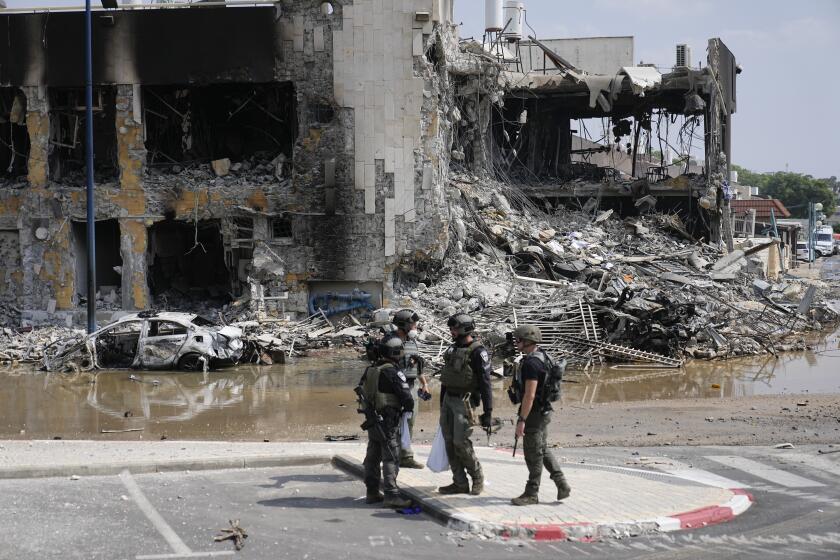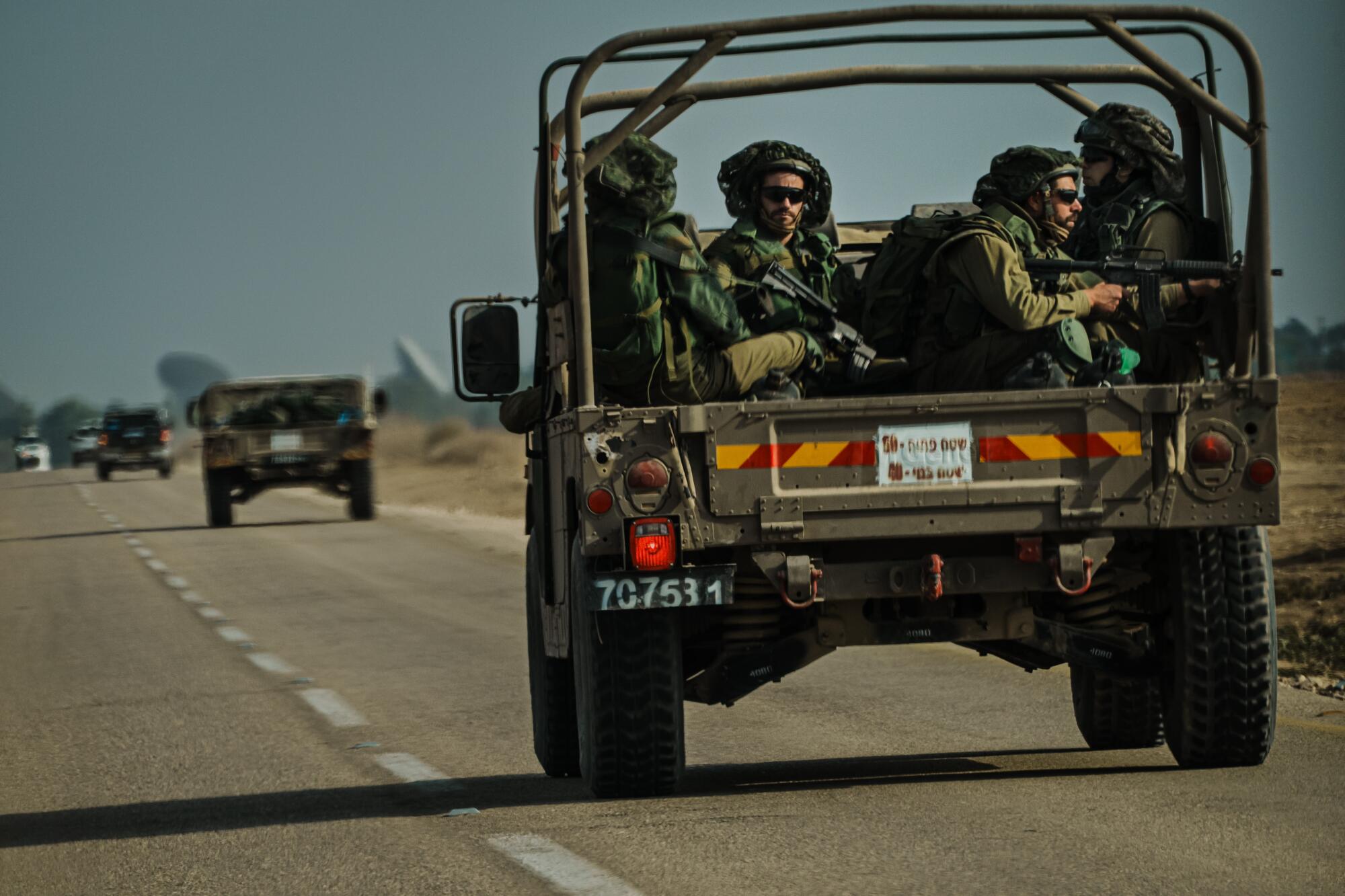
- Share via
JERUSALEM — Israel battled Hamas infiltrators for a third day Monday, massing tens of thousands of troops near the Gaza Strip and making moves toward a full siege of the seaside territory, which Palestinian militants used as a springboard for the biggest attack in decades on Israeli soil.
Israeli Defense Minister Yoav Gallant called for a “complete closure” of the Mediterranean enclave, telling army commanders in southern Israel that “no electricity, no food, no water, no fuel” would be allowed into Gaza, which is home to about 2.3 million people.
Israel has long controlled all formal points of access to the Gaza Strip, except for a tiny border with Egypt that is also blocked. Israel already cut off the territory’s power supply soon after Hamas’ surprise cross-border attack on Saturday by land, sea and air — a devastating strike whose scope, complexity and loss of life had military historians reaching back half a century for comparisons.
Stunned Israelis were referring to the assault as the country’s 9/11 and raising angry questions as to how the nation’s vaunted security establishment could have been caught so off guard.
“We have hard days coming,” Prime Minister Benjamin Netanyahu said Monday night in a nationally televised address. Urging national unity, he repeated his vow that Hamas’ bases of operations would be “completely destroyed.”
An Israeli land invasion of Gaza looked increasingly possible as the combined death toll on both sides surpassed 1,500, including at least 11 Americans.
From the air, Israeli warplanes, helicopters and artillery pummeled Gaza for a second consecutive night, striking more than 500 targets that the Israeli military said were linked to Hamas and to Islamic Jihad, a smaller extremist group. Hamas in turn launched volleys of bombardment at Israeli cities, with rockets hitting the southern city of Ashkelon.
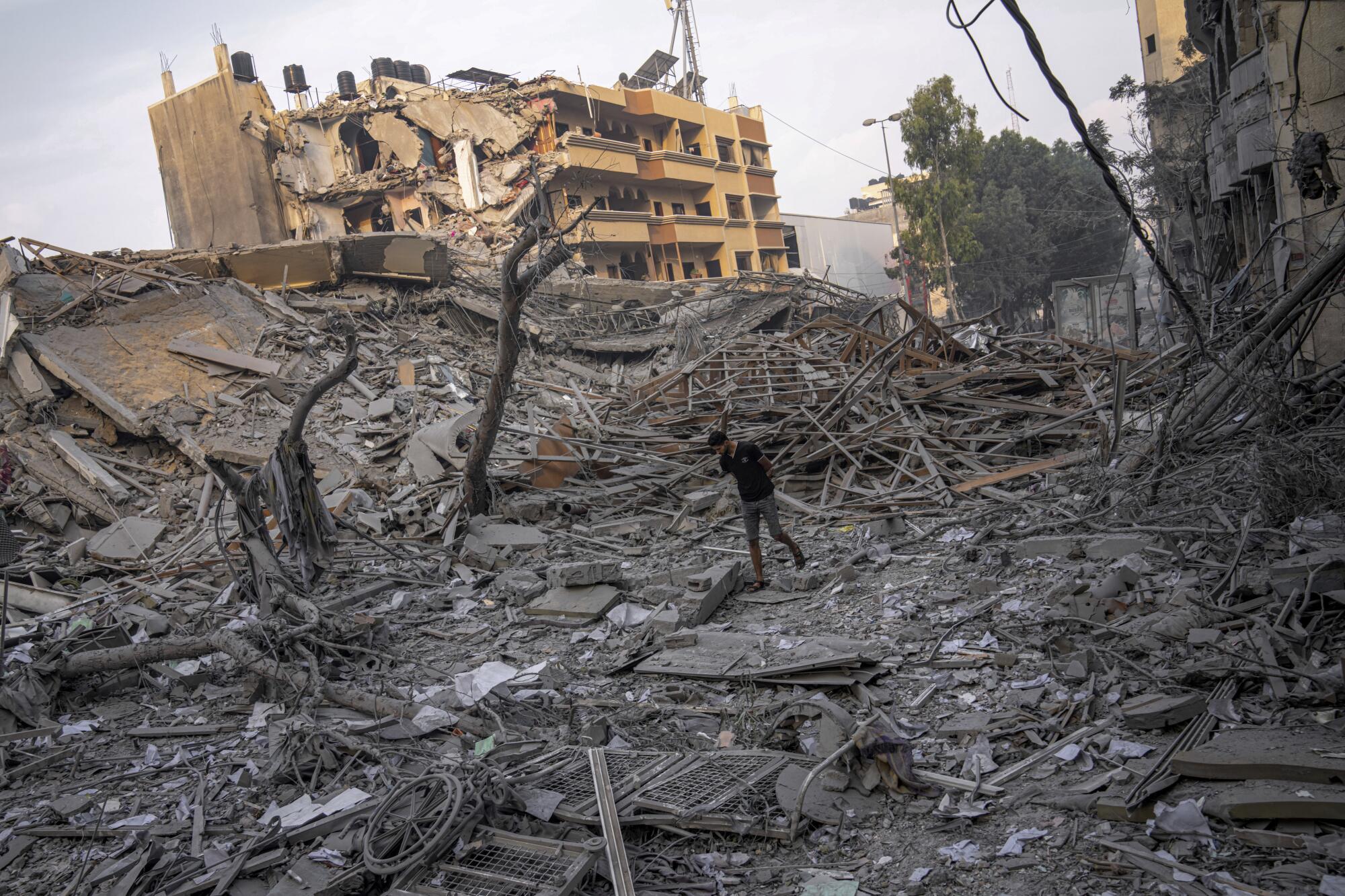
Gaza residents described terrifying scenes amid thunderous airstrikes, particularly in areas close to targeted high-rise buildings, which collapsed in thick clouds of dust and debris.
The streets emptied of vehicles, and throngs of people fled the center of Gaza City on foot, many with only the clothes they were wearing or a few possessions they managed to snatch up. Some said they had received messages from the Israeli army warning them to leave a neighborhood in Gaza City’s center.
The prospect of a siege and an invasion came as Israel struggled to regain full control of a string of small southern communities that came under a highly coordinated, multipronged attack from Gaza-based militants before dawn Saturday, a military spokesman told reporters.
By late Monday morning, the Israeli military said that the fighting had dwindled to “isolated” clashes but that some of the infiltrators might still be in the area.
Urging restraint won’t work, given the scale of the Palestinian attacks. How far will further escalation go?
“It’s taking more time than we expected to get things back into a defensive security posture,” said Lt. Col. Richard Hecht, the military spokesman. “We thought by yesterday we would have full control. I hope we will by the end of the day.”
Hecht added that more militants could still be crossing into Israel from Gaza, because not all the breaches in the border fence surrounding the enclave had been blocked.
Across Israel, daily life was upended as reservists reported for duty, harrowing news bulletins filled the airwaves, and flights into the main international airport were curtailed. Volunteers rushed to donate blood, and most schools remained closed. Rear Adm. Daniel Hagari, the top military spokesman, said Israel had mobilized 300,000 reservists in 48 hours — an unprecedentedly rapid call-up.
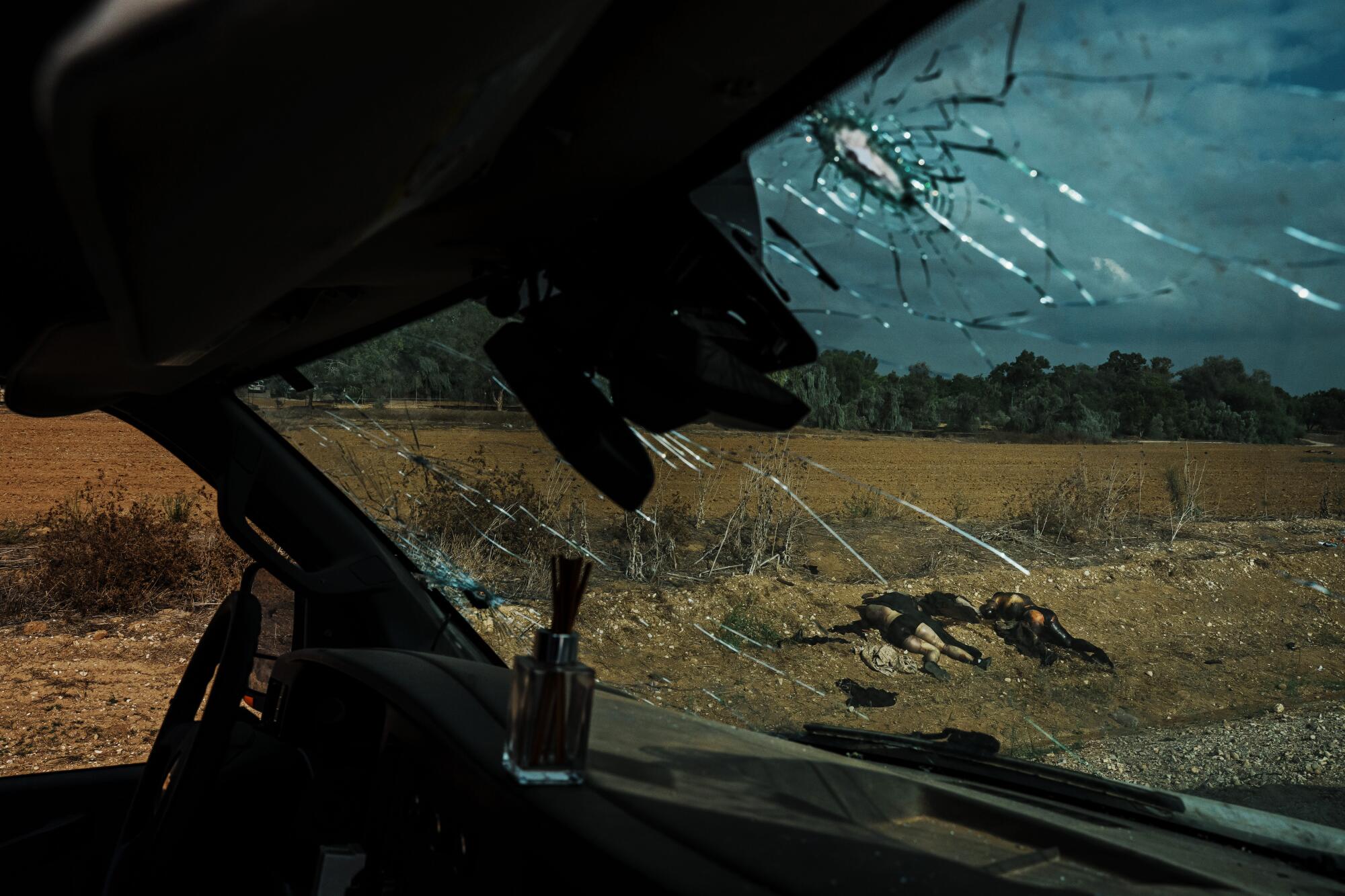
Troops massed in fields about five miles north of the Gaza border alongside tanks, towed artillery, Humvees and other military vehicles. Late Monday afternoon, one group of soldiers quickly exited a bus and sought the safety of a roadside berm as Israel’s Iron Dome missile defense system kicked into gear, launching a rapid stream of rockets into the sky to intercept incoming Hamas fire in a furious puff of smoke.
The Israeli military said in a statement on Saturday night that it was preparing a coordinated offensive in Gaza using air, ground and naval forces.
Another soldier nearby, a 20-year-old second lieutenant who identified himself only as Sar for reasons of privacy, marveled at the head-spinning nature of the last 48 hours.
“I never thought this would happen. On Saturday, I was sitting at home. Then my commander calls me to come to the base. Next thing I’m here,” he said. “I expect this will be hard on Gaza. My only hope is that my soldiers go home safe.”
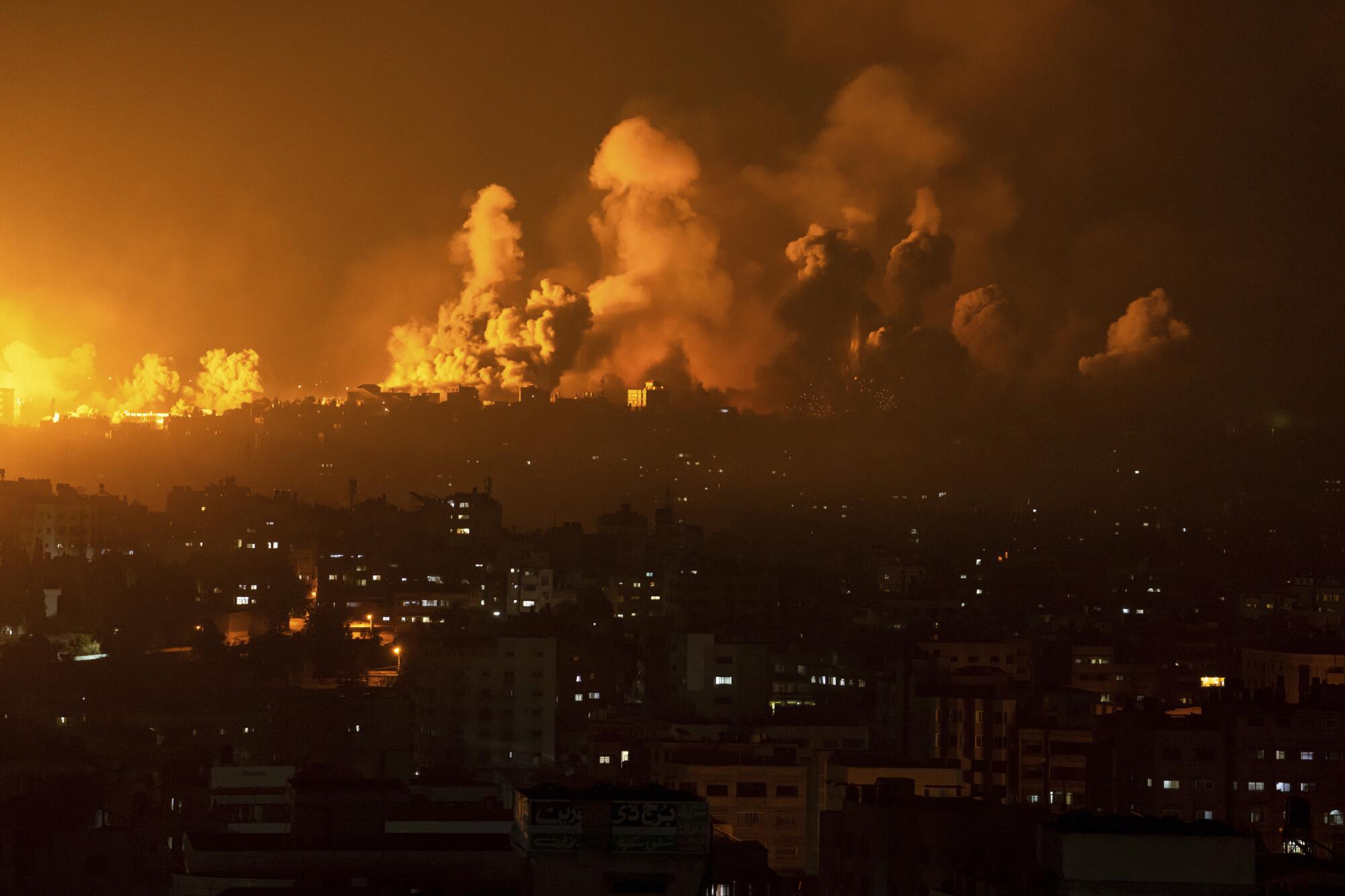
The death toll in Israel rose to at least 900, according to the military, but the figure was clouded by chaotic conditions in some of the areas that were overrun in the surprise attack, which saw Israeli civilians gunned down at bus stops and on highways, or fleeing into barricaded rooms in their homes.
President Biden said that at least 11 Americans were among the dead and that others are still unaccounted for.
“While we are still working to confirm, we believe it is likely that American citizens may be among those being held by Hamas,” he said. “I have directed my team to work with their Israeli counterparts on every aspect of the hostage crisis, including sharing intelligence and deploying experts from across the United States government to consult with and advise Israeli counterparts on hostage recovery efforts.”
At least 150 Israelis, including elderly people and entire families with children, were believed to remain captive in Gaza, with many of them seized and dragged into the enclave in the early hours of the attack.
Abu Ubaida, the spokesman for the Qassam Brigades, Hamas’ military wing, said on the group’s Telegram messaging app channel that four “enemy prisoners” and their captors were killed in the Israeli strikes overnight and Monday morning. Later, amid escalating fears about the hostages’ safety, Abu Ubaida threatened to execute civilian captives if the airstrikes continued, Hamas-affiliated media outlets reported.
In the deadliest single episode of Saturday’s wide-ranging attack, and one of the worst mass killings of civilians in Israel’s modern history, Palestinian gunmen struck an all-night outdoor dance party in the desert a short distance from the Israel-Gaza border fence. Traumatized survivors reported militants methodically hunting down those who tried to flee in their cars or hide in nearby wooded areas.
Ex-Israeli soccer player Lior Asulin was among the more than 260 people killed by Hamas militants at the Supernova music festival near the Gaza border.
Israel’s rescue service Zaka said Monday that paramedics had recovered at least 260 bodies. The festival scene was cordoned off Monday by police and soldiers, and those who tried to approach were told there was ongoing fighting and the zone remained dangerous.
Dozens remained unaccounted for, and social media platforms were flooded with frantic appeals from relatives trying to locate loved ones who were at the festival, some of them last seen in exuberant TikTok videos from early Saturday, shortly before the strike.
On the highway from Jerusalem to southern Israel, Adir Oanunu stood looking at a patch of blood on the divider, which he said had come from a Hamas fighter killed two days ago.
“He came on this bike and stood in the highway shooting at cars,” said Oanunu, 34, pointing to one bullet-riddled vehicle. “The police got him.”
As evening fell, more checkpoints sprouted along the highway, with visibly nervous soldiers training machine guns on any passing vehicle while others came forward to question the occupants.
The Hamas attack tore off Israel’s veneer of invincibility. Is there a sustainable path forward?
One path is vengeance. The other path, which requires bolder leadership, requires shattering the old paradigm of eternal enmity.
In Gaza, the Israeli strikes targeted several multistory buildings, including the residence of Rawhi Mustafa, a member of Hamas’ political leadership, which the Israeli military said was being used as a command center.
Palestinian officials said the death toll in Gaza had mounted by Monday evening to more than 680, with more than 3,700 people injured.
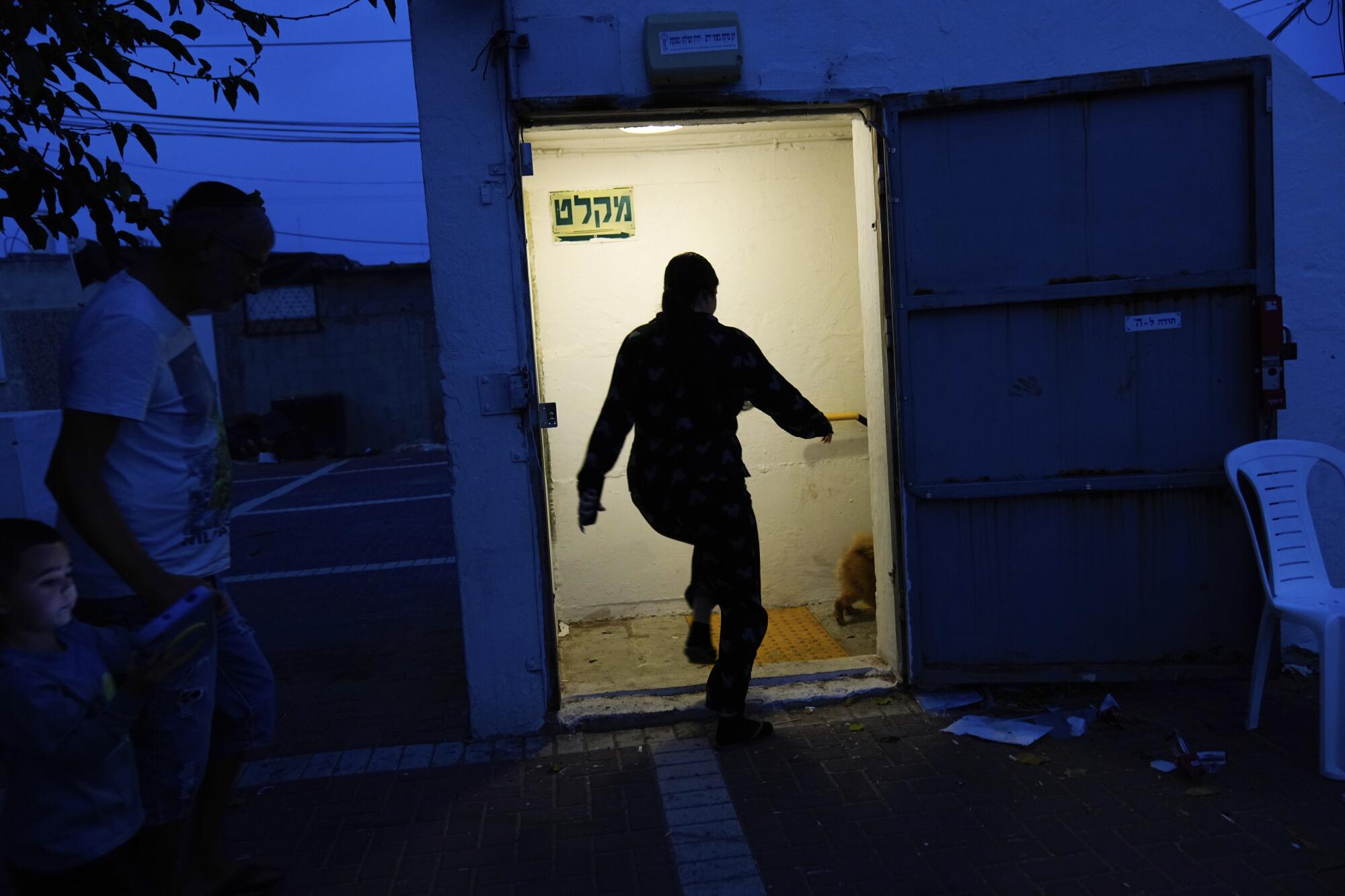
The plight of the people held by Hamas will complicate any Israeli land invasion of the crowded coastal strip and also any political or diplomatic moves by Israel’s far-right government once the fighting stops.
When that will happen, no one knows. Netanyahu warned his compatriots Sunday of a protracted conflict as Israel tries to exact retribution and inflict a decisive defeat on Hamas, which has held sway in Gaza for more than 15 years.
Signs of the country’s shift to a war footing were inescapable on a road south from Jerusalem. Near one military base, hundreds of reservists assembled to join the mobilization for the “difficult war” that Netanyahu warned lay ahead. Farther on, long lines of cars waited at a checkpoint, with police inspecting every vehicle for Hamas militants.
The sudden war in Israel and Gaza upends political calculations as violence hits a scale not seen in decades.
Israel’s air force said in a statement that targets inside Gaza have included rocket launchers, a mosque being used as an operating base by militants and 21 high-rise buildings in which militant activity took place. Hamas, in a statement, accused Israel of hitting “homes inhabited by women and children, mosques and schools.”
Underscoring the fears about continued incursions from Gaza, officials in Sderot, a small Israeli city about eight miles from the Gaza frontier, called on residents to barricade themselves at home.
“Lock doors and windows, and do not open to any stranger,” the Sderot municipality told residents in a bulletin.
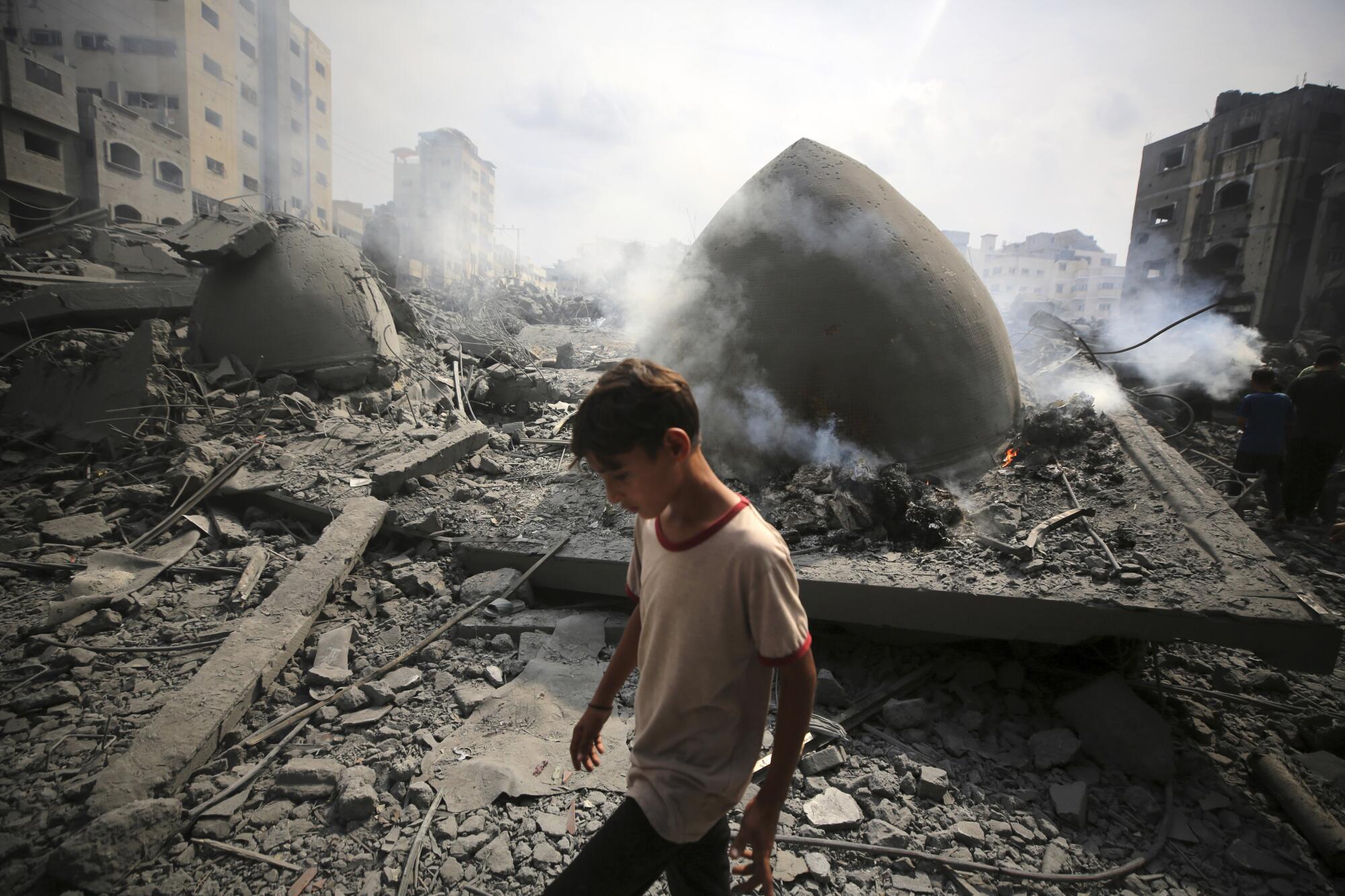
Humanitarian conditions in Gaza, already dramatically desperate, worsened with the strife. The United Nations humanitarian agency said nearly 125,000 people in the impoverished enclave had been displaced since the outbreak of hostilities Saturday.
Underscoring the potential for the conflict to spiral into a regional conflagration, a quartet of gunmen slipped through the Lebanese border into northern Israel, according to the Israeli military. It said that Israeli soldiers killed “armed suspects” and that its helicopters were conducting strikes in the area.
The Reuters news agency later quoted a source from Hezbollah, the anti-Israel Lebanese Shiite militant group, as saying that it had not conducted any operations on Israeli soil Monday. On Sunday, the group had said it launched artillery and guided rockets on the Israeli-occupied Shebaa Farms in southern Lebanon “in solidarity” with Palestinians.
Bulos reported from Jerusalem and King from Toulouse, France. Times staff writers Tracy Wilkinson and Courtney Subramanian in Washington contributed to this report.
More to Read
Sign up for Essential California
The most important California stories and recommendations in your inbox every morning.
You may occasionally receive promotional content from the Los Angeles Times.
